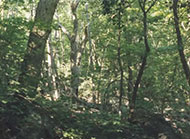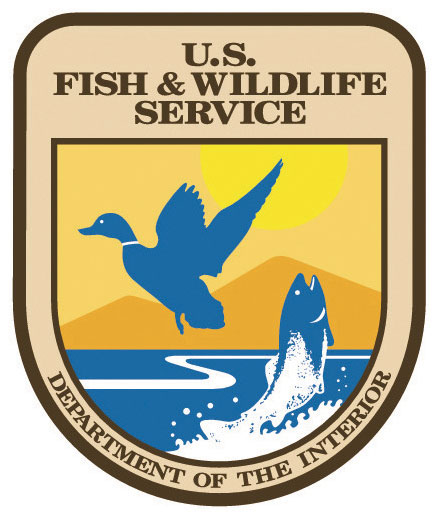Land Snail Ecology

St. Anthony's Wilderness, State Game Lands 211, PA; by Ken Hotopp Land snails are mollusks found on all continents and they occur virtually everywhere in Eastern North America, where there are more than 500 native species. They live primarily in the upper leaf litter of forests, old fields, and wetlands, but also in more disturbed habitats such as active gardens and fields, river banks, suburbs, and even cities. The term “land snails” includes snails and slugs, which have no obvious shell.
These terrestrial mollusks feed upon a wide variety of organic material, mainly green or dead herbaceous plants, rotting wood and fungi, bark and algae, but they also consume empty snail shells, sap, animal scats and carcasses, and even rasp limestone rock or cement. Carnivorous snail species attack nematodes and other snails.
Land snails in turn are eaten by a variety of invertebrate and vertebrate predators. Predators include invertebrates such as parasitic mites, nematodes and flies; beetle larvae, beetles and millipedes; and other snails. Cychrine beetles have specialized bodies for preying upon land snails. Fireflies are a well-known insect whose larvae consume snails. Vertebrate predators of snails and slugs include herptiles such as salamanders and turtles; shrews, mice and other small mammals; and birds, especially ground-foragers such as thrushes, grouse, and turkey.
With regard to ecosystem function, shelled land snails (as opposed to slugs) are important in calcium cycling. They glean calcium from their food, concentrate it in their shells that are made mainly from calcium carbonate, and pass it up the food chain as they are consumed by Predators. Both shelled snails and slugs can generally be categorized as decomposers, though they play only a small role compared to other decomposition organisms.
Land snails do not move far over their lifetime, so they can be excellent indicators of site history and site conditions. Because shelled land snails have a high calcium demand, they are sensitive to calcium availability due to soils and plants. Site moisture and past land clearing or fire also strongly influence snail populations. Land snails have been used extensively in European archaeology to interpret environments of the distant past. They can also be indicators of pollution, as they uptake environmental toxins such as cadmium.
Human use of land snails as food ranges from Native American consumption of Oreohelix species snails in the western states, to fine dining upon Helix species snails served as escargot in restaurants. Medical uses include the production of an anti-agglutinin from the albumin glands of Helix aspersa.
Land snails can also have negative interactions with other organisms. Snails are intermediate hosts to a variety of mammalian parasites. The cervid brainworm Parelaphostrongylus tenuis is carried by deer and can severely limit moose and caribou populations. But the most serious ecosystem and agricultural impacts due to land snails are often related to non-native pest populations. For example, the introduced European white garden snail Theba pisana that can damage ornamental and citrus plants has been the subject of eradication programs in California. And virtually every Pennsylvania gardener knows the problems that introduced arionid slugs can cause.
Further importation of non-native land snails as pets or as “biological control” agents has the potential to create major agricultural and ecosystem impacts. The Giant African Snail is one popular pet, which – although it is illegal to import to the United States – is being sold by poorly-regulated, ignorant, or unscrupulous dealers and then released into the wild by unknowing owners.
Ken Hotopp 10/22/05



Development of this site was supported by the generous contributions of Pennsylvanians to the Wild Resource Conservation Fund, and by the Virginia Dept. of Game and Inland Fisheries with a State Wildlife Grant from the US Fish & Wildlife Service.
